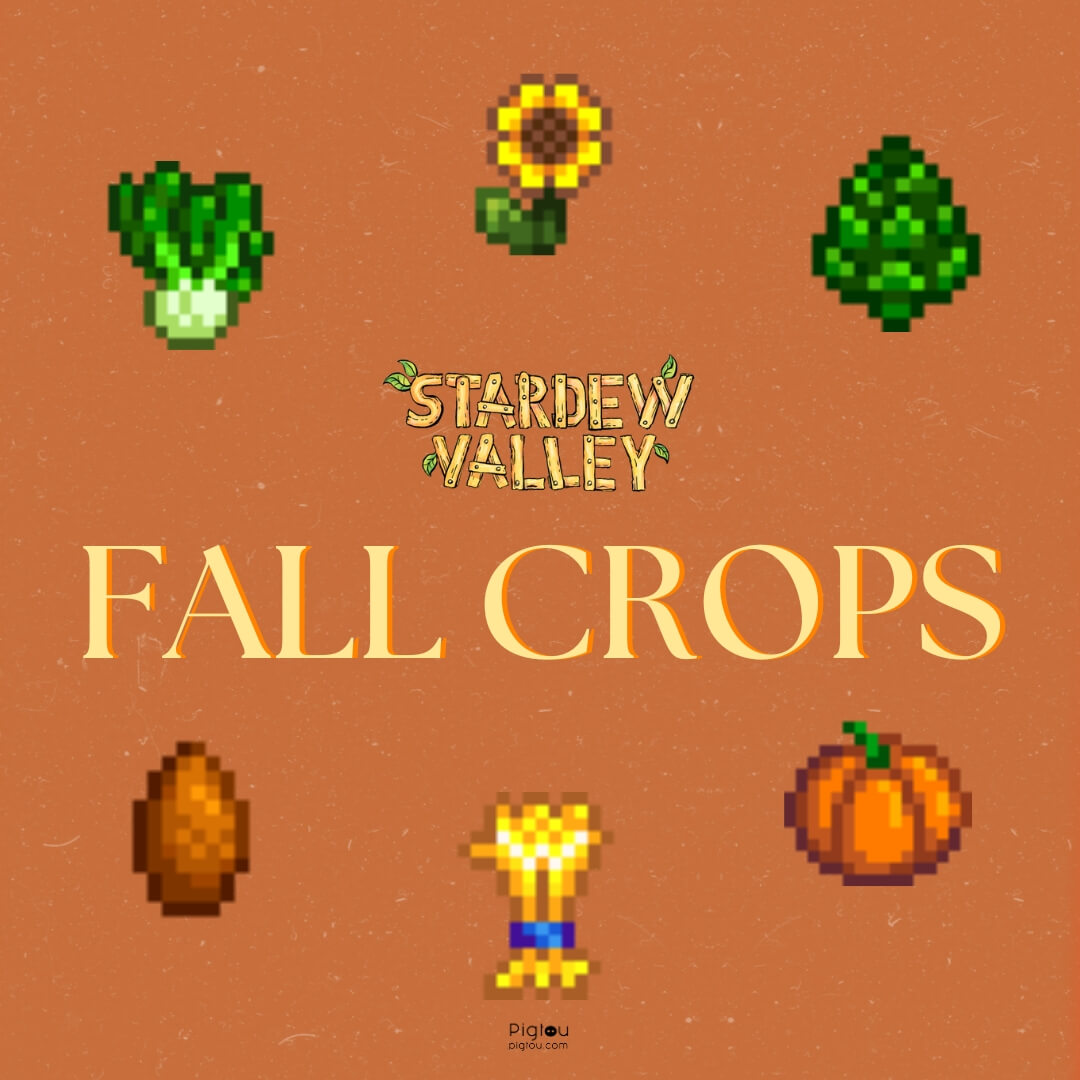Strategizing for the next farming season can be tricky. To ensure success, it’s necessary to comprehend how to maximize profits with the best crops to cultivate in each season. This guide provides an in-depth look at the highest-yielding fall crops, so you’ll never have to ask yourself what to grow again! But first, here’s a recap of all available fall crops:
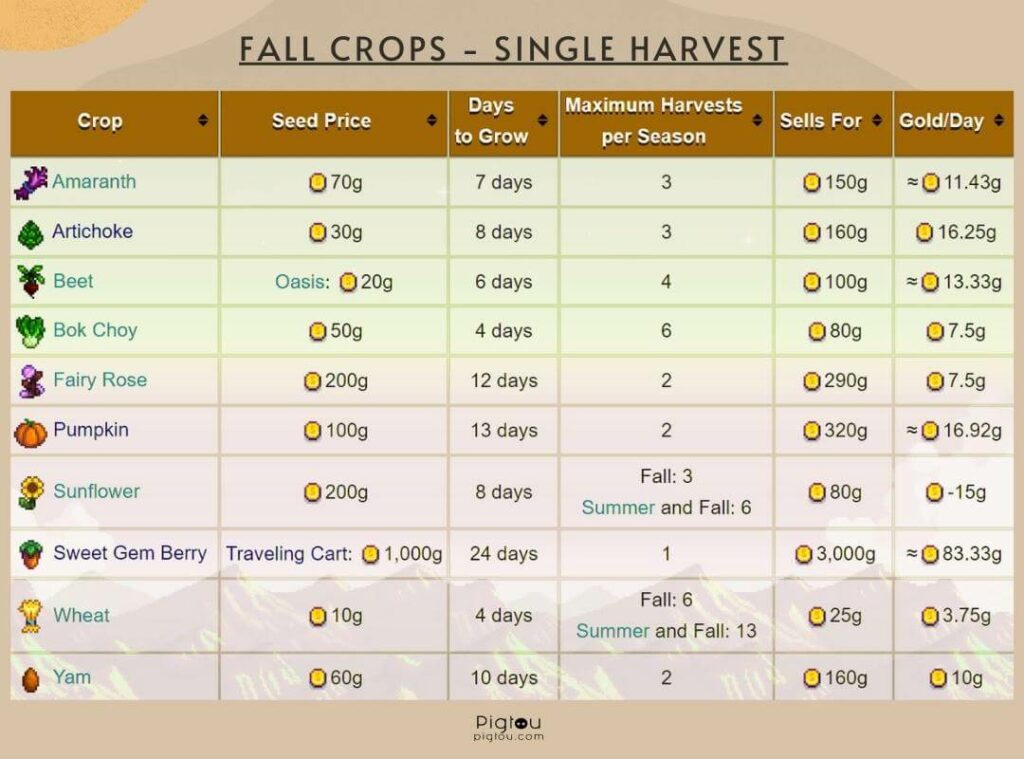
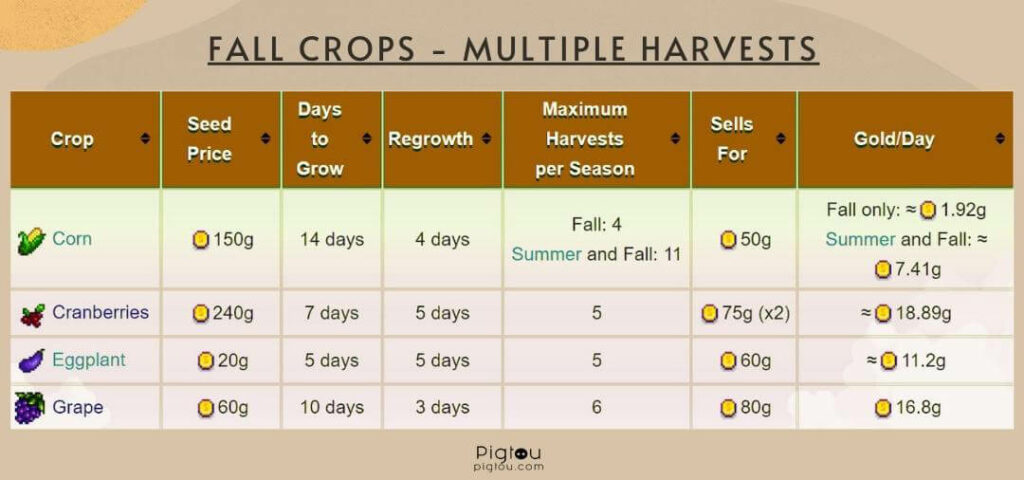
Which Are The Most Lucrative Crops To Grow In Fall?
Are you wondering which of the fall crops offer the most financial rewards? Look no further for your answer! Bear in mind, though, that although some crops are more lucrative than others, it’s always best to grow a variety. After all, you never know when you’ll need to give a gift to an NPC or make an effort to charm someone. It’s preferable to have 8-10 vegetables in a storage chest than one or two.
Sweet Gem Berry
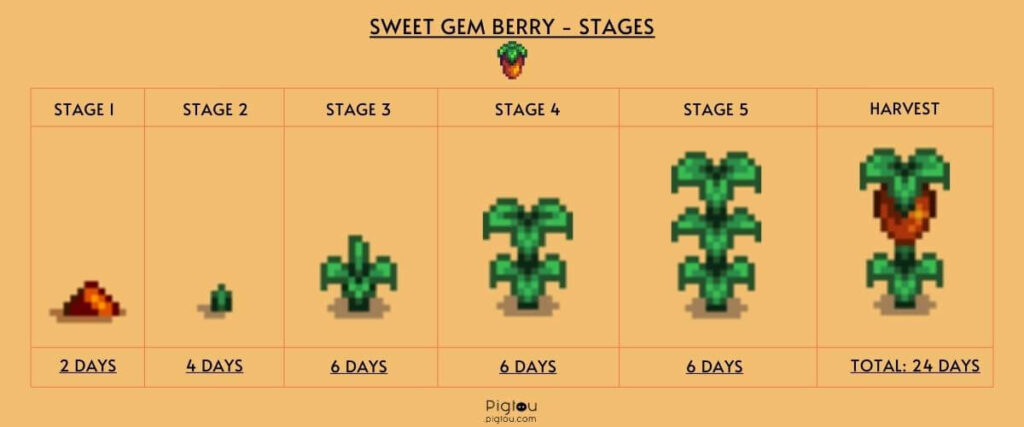
Sweet Gem Berries are derived from Rare Seeds, accessible from the traveling cart each Fri/Sun during spring/summer for $1000 per seed. This implies each seed will generate a minimum revenue of $2000. They take 24 days to cultivate, and it is feasible to produce round 20 of them by fall if two are purchased weekly from the traveling cart. The best practice is to sow them on fall day 1, leading to an immense return in the wintertime.
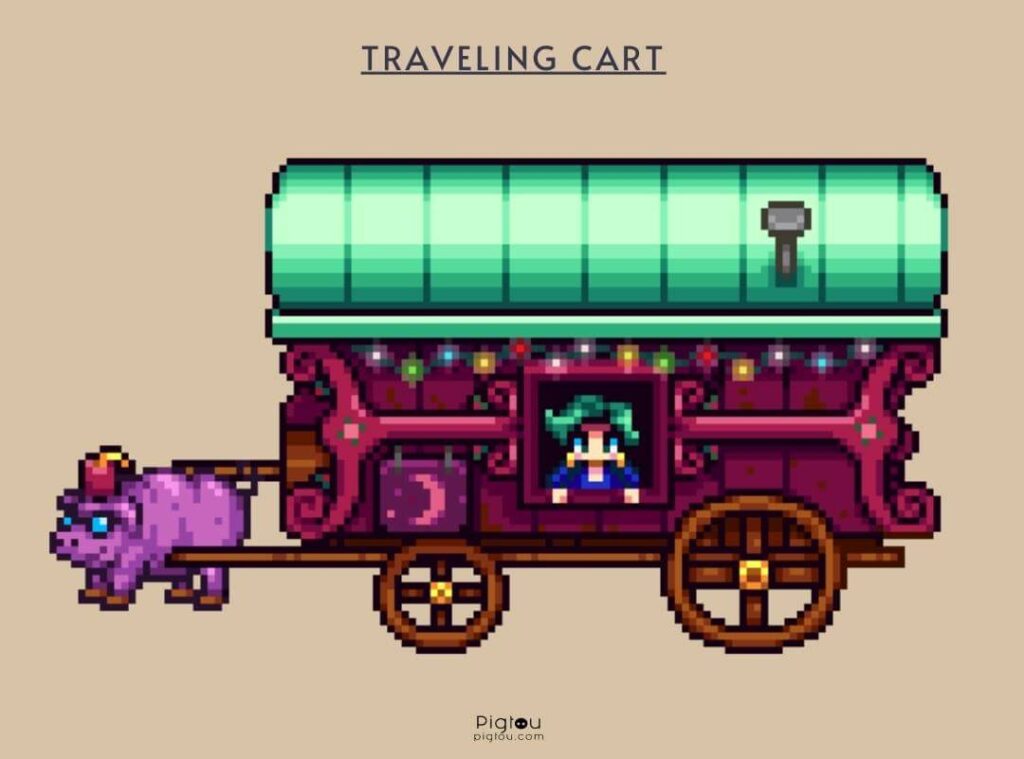
Ancient Fruit
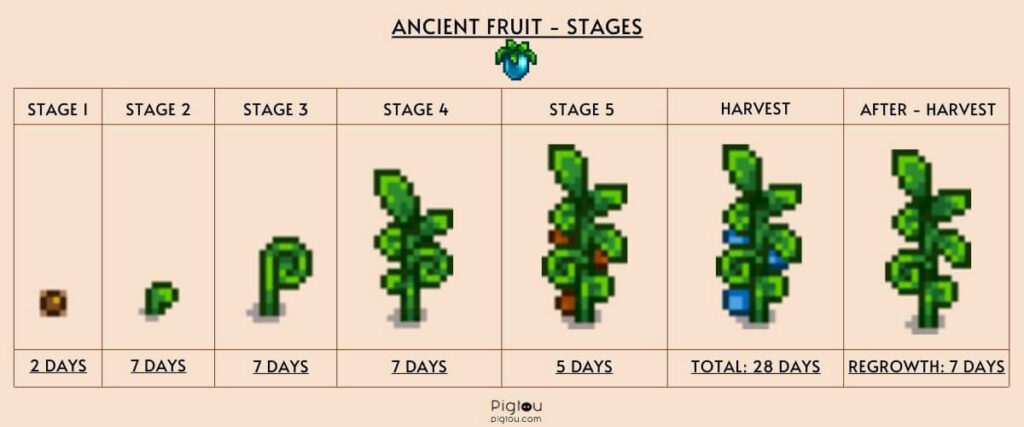
Ancient Fruits germinate from Ancient Seeds after 28 days and reproduce every 7 days in Spring, Summer and Fall.
Ancient seeds can be obtained through the following methods:
- Purchased at the Traveling Cart.
- Fabricated through a Seed Maker on an Ancient Fruit.
- Donating an Ancient Seed artifact to the Museum. Doing so will be rewarded with a packet of Ancient Seeds and a crafting recipe to enable fabrication of Ancient Seeds from an Ancient Seed Artifact.
The optimal course of action is to cultivate them in the Greenhouse, that way preventing decay in winter.
Cranberry
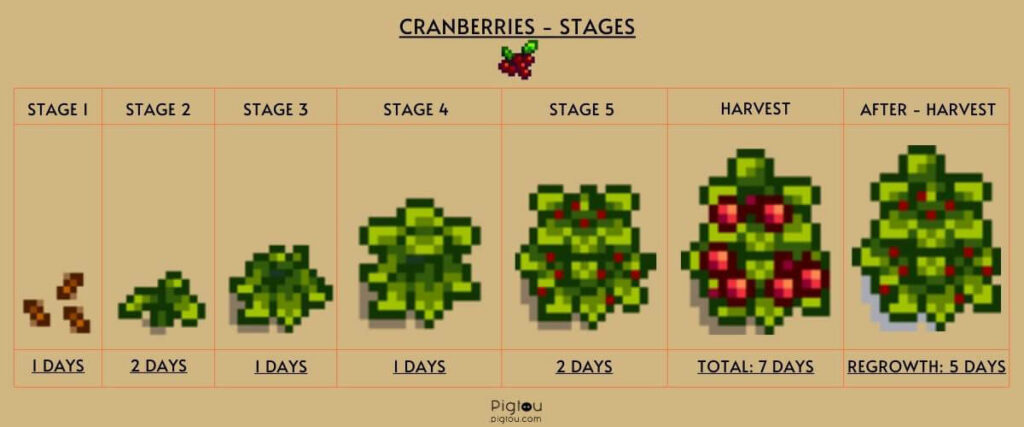
Cranberries are a fruit-bearing plant that will sprout from their seeds after 7 days, continuing to provide fruit every 5 days once matured.
Cranberries are an optimal choice for autumnal planting. This is due to the plentiful bounty each plant bears and the fact that they do not need to be replanted. It would be advantageous to make use of a seed maker, saving some of the cranberry seeds for the subsequent season in order to reduce the costs and potentially produce an expansive field of cranberries.
The cost of individual seed is estimated to be 240g, requiring the first and a sizeable portion of the second harvest to compensate for their price. This works out to an estimated 3.5 successful harvests (3.5 x 2 x 75g = 525g per plant in a single season).
Considering the enormity of the fruit yield, it becomes apparent that cranberry plants can be remunerative in the autumn months if planting occurs on the first day, granting up to 5 harvests in a single season (75 x 2 x 5)g, which in total amount to an impressive 750g per one cranberry plant in a single season.
Pumpkin
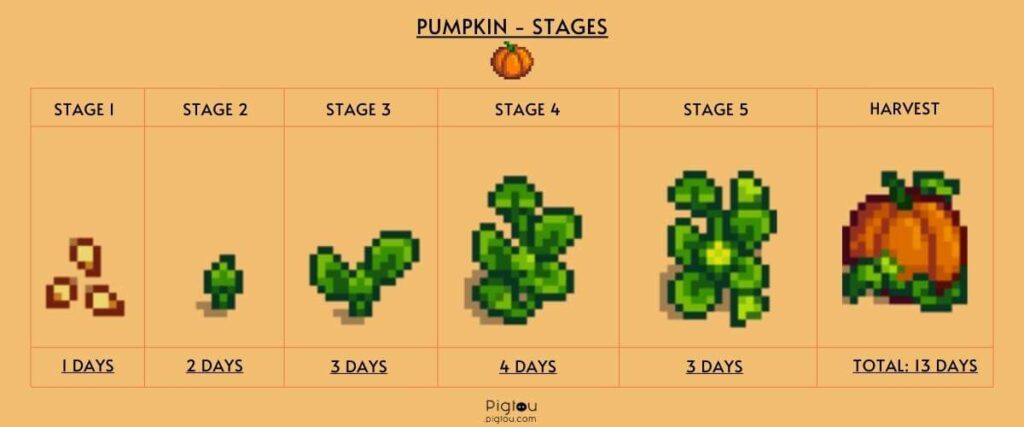
Pumpkins are a veggie crops that will sprout from pumpkin seeds after a span of 13 days. Similarly to Cauliflower and Melons, planting in 9×9 configurations will cause the growth of giant pumpkins. The individual seed costs 100g, each one valued at 320g when selling. This implies that the first yield is more than enough to return the seed price (220g per pumpkin, surpassing the 100% mark).
Grape
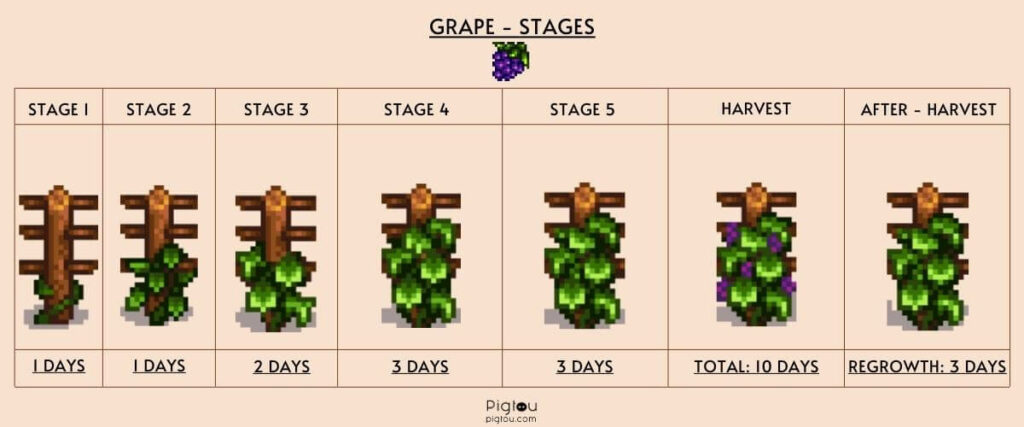
Grape, a common crop, takes 10 days to reach full maturity. These plants can be re-harvested every 3 days which leaves a 28-day window for selling them at 480g, which costs only 60g to obtain, making a 420g profit per plant!
Artichoke
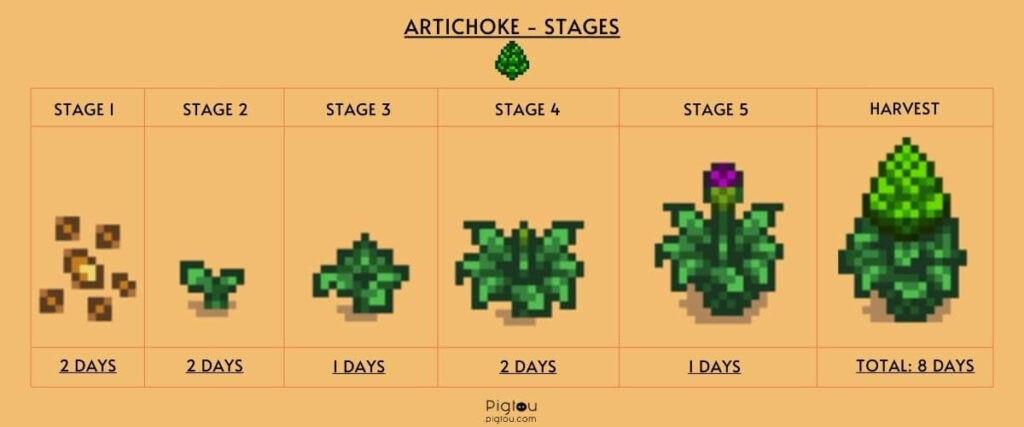
Artichoke, a vegetable crop, reaches the maturity from Artichoke Seeds after 8 days. Pierre’s General Store has the seeds for purchase starting in Year 2, but those prior to this can be acquired from the use of Mixed Seeds. Artichokes are highly undervalued in the fall harvest despite the return rate being rather high. Just 30g for the seeds can bloom up to 160g and beyond, granting over 400% markup; alongside this, the 8-day growth rate allows for planting them three times every season.
Top Choice For Beginner Years
In the initial stages of your farming career, the three crops often recommended are: Pumpkins, Cranberries and Grapes. Since Cranberries tend to be the most lucrative, let’s compare them to the other two!
Pumpkins VS Cranberries
Pumpkins have the potential to be the most profitable fall crop, but you must have:
- Sufficient resources to purchase an adequate supply of seeds
- Fast-growing items so you can get three harvests out of them
- A keg facility in place or under construction to capitalize on their true value.
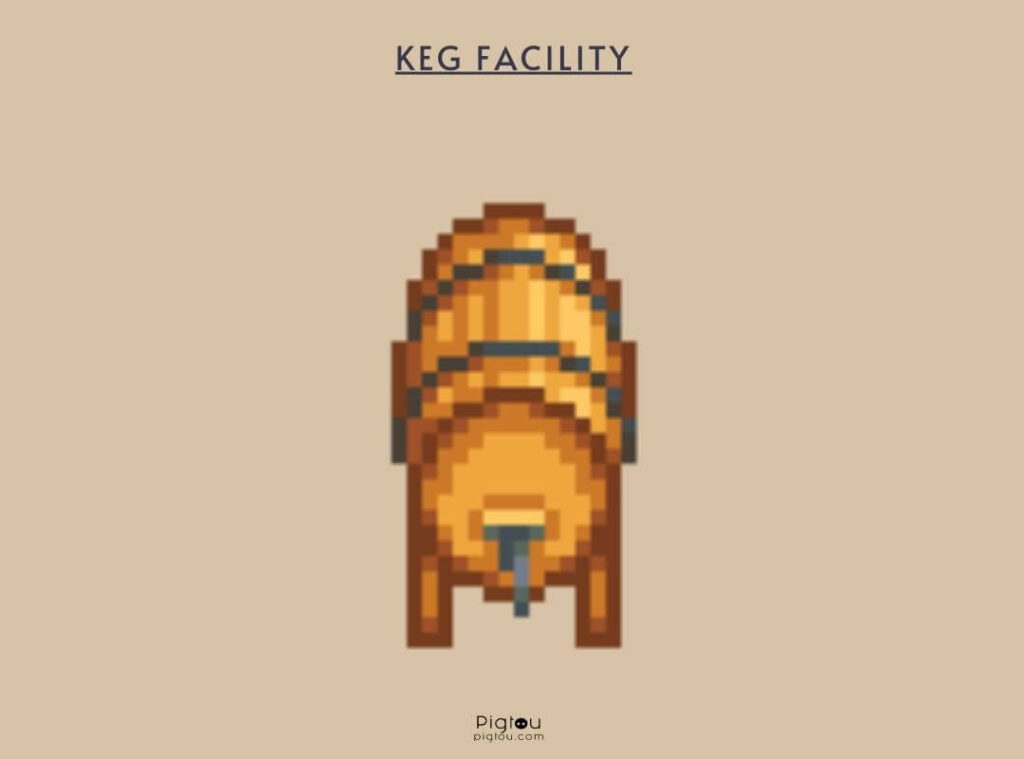
Nevertheless, you can choose to cultivate Cranberries, which, although slightly more costly initially, reward you with multiple fruits from each shoot, multiplying your profit from each harvest. In terms of obtaining the most ROI from a raw crop, Cranberries are the top pick, whilst Grapes are ideal if you don’t yet possess the full jar/keg shed facility.
Grapes VS Cranberries
When choosing a crop to invest in, it is beneficial to weigh the advantages and disadvantages of each option. Grapes and Cranberries, two popular crops, are both beneficial and have different advantages to consider. If one simply intends to sell the crops, then grapes are the more profitable option. On the other hand, when it comes to turning the crops into wine or jelly, cranberries present a better option.
Concerning initial investment, grapes require only 60g for the seed but will sell for 480g. This leaves 420g of profit per plant. On the other hand, cranberries require a higher 240g investment for the seed and will subsequently sell for 650g. This leaves 410g of profit per plant.
Moreover, when considering jelly and wine, grapes yield 240g per bottle of wine and 210g per jar of jelly while cranberries yield 225g per bottle of wine and 200g per jar of jelly. However, there is a major advantage to the cranberries, as one plant yields 4 times as many cranberries in 28 days.
Best Fall Cash Crop Chart
For investors looking to make the most profit throughout the season, a useful tool to consider is an interactive chart that takes into account the cost of seeds, fertilizer, reharvesting, and time left. This chart can be found on the website , providing a great resource for the agricultural market.

